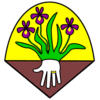
|

|

|
Landscape Design Checklist
Paul Burns, Garden Design & Education©
There are seven main considerations in planning a landscape; movement, depth, harmony, contrast, balance, color, and seasonal progression of interest.
- Movement deals with traffic flow, how you will move through the garden. It also deals with how your eye will move through the garden, and how curving sweeps of plants and partially hidden views will draw interest.
- Depth is created by using low, medium, and tall plants, or by using various shades of the same color.
- Harmony is achieved by repeating plants and patterns to provide a unifying effect.
- Contrast provides interest and excitement. These accents become the focal points.
- Balancing repetition without monotony, and contrast without confusion, is the key element for a peaceful design. You don't need absolute symmetry, just implied balance.
- Color is vital, including using contrasting shades and textures of green.
- Seasonal progression of blooms, foliage colors, and bark gives a year-round interest to the garden.
Design Check List
Before you put the first plant into the ground, you should analyze the property for it's usage, it's optimum growing conditions, and it's mood. This checklist will help you judge the property and its needs.
Site Analysis
- Property lines from the original plat, including easements and right-of-ways
- Utilities (call 1-800-282-7411 to have utilities marked)
- Neighborhood personality and style
- Neighborhood covenants
- Existing strengths and weaknesses
Use Analysis
- Play areas
- Patios, decks, and lounge areas
- Private work and storage areas
- Access to all areas
- Screening
- Future expansion, pools, garages, etc.
- Walkways and traffic flow
- Mowing and maintenance
- Irrigation and watering
Environmental Analysis
- Seasonal sun and shade
- Slopes and water flow
- Soil and rock
- Existing vegetation
- Wind
Design Areas
- The approaches
- The boundaries
- The window views
- The subyards, front, back, and sides
Design Elements
- Formal or informal
- Focal points, accents, and color beds
- Balance and unity, implied or rigid symmetry
- Repetition and contrast
- Movement
- Water and rock
- Gazebos, arbors, and statues
- Lawn areas that flow
Plant Selection
- Ease of growth and maintenance
- Ability to thrive in environmental conditions
- Color
- Contrast
- Fragrance
- Texture
- Seasonal progression of bloom
- Winter characteristics
- Fall color
- Shade production
- Elimination of grass in unfavorable areas
- Ground covers
- Cut flowers and flowering shrubs
Project Planning
- Set priorities
- Separate into small do-able projects
- Plan a project for spring and fall
Paul Burns, Garden Design & Education
1996©
 |
Paul Burns Atlanta, Georgia, USA |

Don't Tread on Me! |